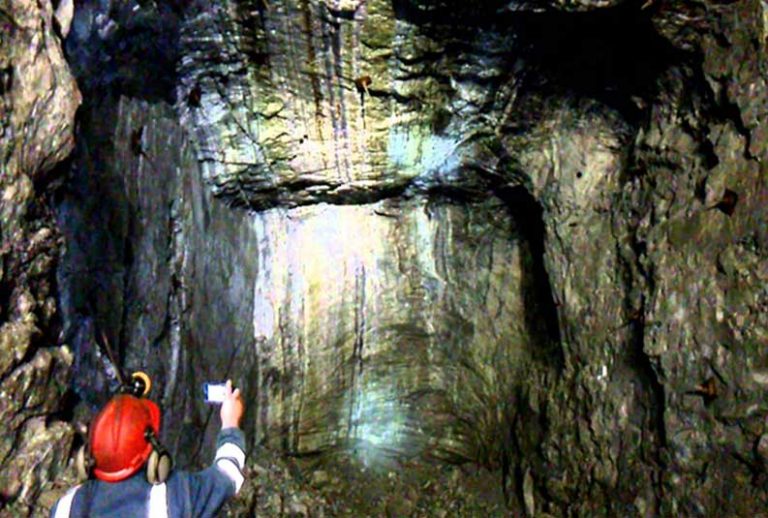The Chamber of Mines of Peru promotes monitoring system to prevent sudden releases of rock bodies.

The Chamber of Mines of Peru intensifies its work to promote the best seismic monitoring systems for underground mining.
Rock bursts are frequent events in several mines in Peru. They are understood as violent releases of energy stored in rock masses and geological structures. Likewise, they represent one of the problems associated with underground operations, since they are the main cause of fatalities in the extractive industry.
In order to reduce the number of accidents caused by rock bursts, mining companies have opted for the implementation and improvement of seismic monitoring systems.
Rock failures can vary in magnitude. They can range from expulsion of small fragments to collapse of areas covering several hundred meters. The outbursts occur when the bedrock is subject to high pressures, and when unable to deform sufficiently, it begins to accumulate deforming energy until a critical point is reached.
For this reason, it is important for the Chamber of Mines of Peru to disseminate among professionals the use of seismic monitoring systems as a measure to prevent these events.
An example of this type of situations is the mining disaster that took place in 2009. A rock burst caused the collapse of one of the deposits operated by Compañía Minera Casapalca. Another similar case occurred in 2011. Three miners were trapped after a rock burst caused a collapse inside the Severnaya deposit, located in the city of Vorkuta, Russia.
According to Fernando Fernández, Lagazio, specialist of the Chamber of Mines of Peru, «In areas of high mining-induced stress concentration, a series of complex mechanisms occur such as energy storage, caused by excavations conducted during mining process, in addition to the presence of geological phenomena such as faulting and characteristics of the bedrock. This constitutes a source of seismic energy that can generate rock burst.»
According to what was mentioned by the Chamber of Mines of Peru consultant, the characteristics of the mining process demand bedrock stress.
These factors include increase in density of excavations and their complex spatial interrelationships; development of exploitation without adequate planning of mining schemes and sequences; failure to take into account equilibrium restoration practices, in order to contribute to regional stability. The complete removal, in some cases, of protective pillars (bridges) of the level galleries, without replacing them with equivalent structures; and finally, the non-application of support systems in areas that require it, without taking into account the duration of a work service; making permanent those that, typically, should be temporary.
In mining, two types of seismic movements can be distinguished. The so-called Type 1, which occur where the stable equilibrium of ancient faults is disturbed due to mining activities. This kind of seismicity may include events with high magnitude and occur either near or at some distance from the deposit wall.
Type 2 seismicity occurs in deep mines, where rock bursts occur as a result of large stresses induced by mining activity. This class of seismicity results from sudden formation and propagation of shear fractures with displacements of up to 0.1 m. They are generally of low to medium magnitudes; their frequency depends on the mining activity, measured by excavation speed. Studies show that this type of seismic events generally occur less than 100 m from the deposit wall.
Great consequences of rock bursts have caused companies to monitor possible formation of these phenomena using special geophysical equipment installed in the mines in order to ensure safety of workers working underground. This equipment is installed underground and in selected locations on the surface. The data acquired in real time are analyzed from a seismological point of view. In general, they indicate that each mine has its own characteristics and specifications, generating a particular type of vibrations depending on the local geology.
An example of the effectiveness of these mechanisms can be found in the Galena mine of the Silver&Golds company, located in Wallace, Idaho, USA. Silver, copper and lead are extracted in this deposit. The North American deposit has shown constant seismic activity since the late 1950’s. Since 2013, the monitoring system has been optimized with the implementation of an OCC fiber optic cable. This technology has helped in the monitoring and management of seismic changes. As a result, there have been no deaths or injuries related to rock bursts since 2001.
«Prior to the installation of the OCC cable, the Galena mine had one of the most advanced monitoring systems for its time, but it relied on manual processing from underground office,» said Kathryn Dehn, Senior Rock Mechanics Engineer. «Today, real-time monitoring of seismic activity allows us to alert workers if a problem is detected, so we can remove them from a critical area until the rock stabilizes. It has helped reduce injuries and prevent accidents,» he concluded.
The implementation of these mechanisms helps to reduce or eliminate risk situations in which workers and equipment are placed during the development of mining operations, especially in those of great depth, which helps to ensure the continuity of the mining operation.